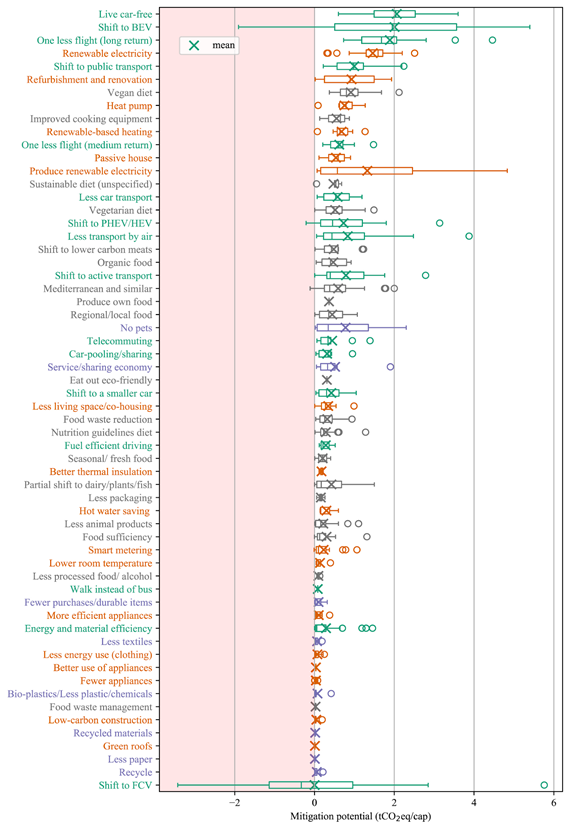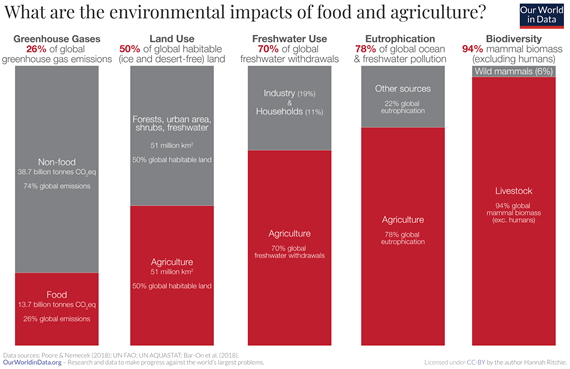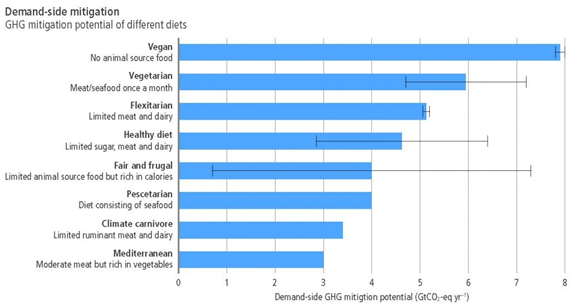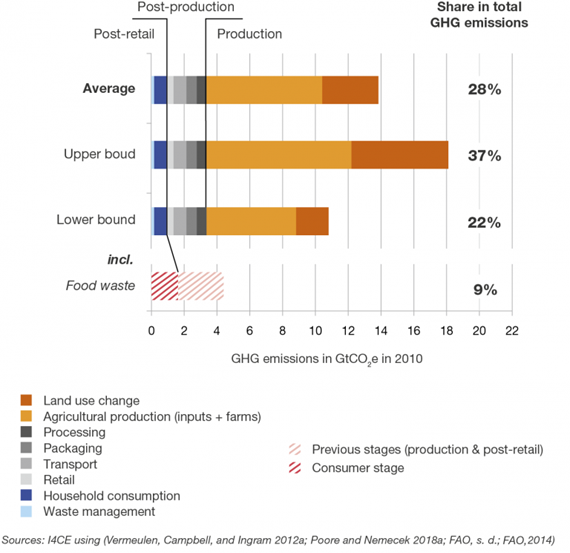 Arguments
Arguments
 Software
Software
 Resources
Comments
Resources
Comments
 The Consensus Project
The Consensus Project
 Translations
Translations
 About
Support
About
Support


Latest Posts
- Skeptical Science New Research for Week #49 2025
- Climate Adam & Dr Gilbz - Paris Climate Agreement At 10: Did It Do Anything?
- Fact brief - Does the recent slowdown in Arctic sea-ice extent loss disprove human-caused warming?
- Why the chemtrail conspiracy theory lingers and grows – and why Tucker Carlson is talking about it
- 2025 SkS Weekly Climate Change & Global Warming News Roundup #48
- Skeptical Science New Research for Week #48 2025
- Consensus machines
- Just have a Think - How an African energy revolution could save ALL of us.
- A girl’s grades drop every summer. There’s an alarming explanation.
- 2025 SkS Weekly Climate Change & Global Warming News Roundup #47
- Fact brief - Are changes in solar activity causing climate change?
- Skeptical Science New Research for Week #47 2025
- Exploring newly released estimates of current policy warming
- Climate Adam - Why the Climate Crisis is a Health Crisis
- Super pollutants are trendy, but we should be careful how we use them
- 2025 SkS Weekly Climate Change & Global Warming News Roundup #46
- Skeptical Science New Research for Week #46 2025
- On the Gates climate memo
- Climate Adam - Climate Scientist responds to Bill Gates
- Five ways Joe Rogan misleads listeners about climate change
- 2025 SkS Weekly Climate Change & Global Warming News Roundup #45
- Skeptical Science New Research for Week #45 2025
- Debunking Joe Rogan, Dick Lindzen, and Will Happer
- Fact brief - Does cold weather disprove human-caused climate change
- Climate change strengthened Hurricane Melissa, making the storm’s winds stronger and the damage worse.
- 2025 SkS Weekly Climate Change & Global Warming News Roundup #44
- Skeptical Science New Research for Week #43 2025
- Climate Adam - Can Solar Halt the Desert?
- Fact brief - Is there empirical evidence for human-caused global warming?
- A “controversial” methane metric?
Archived Rebuttal
This is the archived Advanced rebuttal to the climate myth "Veganism is the best way to reduce carbon emissions". Click here to view the latest rebuttal.
What the science says...
|
While veganism has the potential to reduce individual and global GHG emissions, it is just one of many individual actions that can reduce GHG emissions. |
Vegan activism and its environmental aspects
While the subjects of animal welfare and animal consumption have a long history in human societies, vegan diets (that avoid the consumption of animal products as much as possible) have been an increasingly present subject in the public discourse over the last two decades, represented by a surge in the interest in veganism across the world. Vegan activism, the activity of advocating for people to adopt a vegan diet, have also been on the rise. Hence, many books, movies, and media campaigns have been created since the year 2000 with the purpose of focusing the attention of the public on animal welfare and the benefits of vegan diets.
Vegan activists have presented compelling arguments to justify the adoption of vegan diets from an environmental point of view since the publication of several reports and studies, such as the 2010 UN report called “Assessing the Environmental Impacts of Consumption and Production”. This report, among others, argued that “Animal products, both meat and dairy, in general require more resources and cause higher emissions than plant-based alternatives”. Such conclusions have motivated vegan activists to focus on presenting vegan diets as a tool to reduce humanity’s impacts on the environment, linking the ethics of animal welfare to the preservation of ecosystems in the process.
Figure 1 : Estimated impacts of agriculture on GHG emissions, Land Use, Freshwater Use, Eutrophication and Biodiversity by Poore & Nemececk (2018). Figure by Our World in Data. (click for larger image)
However, as for any form of activism, communication from vegan activists can be subject to bias and inconsistencies, in order to push a particular message. This has been crystalized in the controversy surrounding the movie “Cowspiracy”, a 2014 documentary film which denounces the impact of animal agriculture on the environment. While the documentary tries to justify all of its main arguments with extracts of scientific sources or opinions of researchers, it has been criticized for putting forward the idea that animal agriculture is responsible for the majority of global Greenhouse Gas (GHGs) emissions, by focusing on a number provided by a report from the Worldwatch Institute that was not peer-reviewed, and by ignoring the larger consensus on the impact of animal agriculture (Figure 1).
Still, vegan activist organizations such as People for the Ethical Treatment of Animals (PETA) have echoed a similar point of view by stating on their website that “eating vegan foods rather than animal-based ones is the best way to reduce your carbon footprint”. However, while the scientific consensus seems to indicate that a vegan diet could be a powerful lever to reduce individual GHG emissions, they might not necessarily be the best option in terms of their mitigation potential when compared to other actions that we can take.
The current consensus about the GHG emissions of vegan diets
The environmental impacts of vegan diets have been studied in many different articles since the year 2000, resulting in meta-analyses and reports that summarize existing results. These have depicted a growing consensus as to how animal agriculture impacts the environment, how much this impact can be mitigated by producers of animal products, and how much it can be reduced by changes in the consumption of animal products (as with vegetarian or vegan diets).
Existing studies often use a “life-cycle analysis” (LCA) approach when comparing the impacts of the production and consumption of different food products. This approach takes into account all of the steps and resources necessary to create the product, but also to dispose of it. Hence, when a number of GHG emissions is obtained for many food products, theoretical diets can be formulated and compared to try and estimate their potential to mitigate GHG emissions.
Concerning the GHGs emissions linked to animal agriculture, the Food and Agriculture Organization (FAO) of the UN first estimated them to be of 18% in their report “Livestock’s long shadow”. Another estimation from a more recent report of the FAO suggest the number of 14.5%; however, the FAO states that the first report is “based on a much more detailed analysis and improved data set", and that “the two figures cannot be accurately compared, as reference periods and sources differ”.
Meanwhile, a meta-analysis from Clark & Tilman (2017) compared environmental indicators across a wide range of different food types, including GHGs emissions. Their results show that “for all indicators examined, ruminant meat (beef, goat and lamb/mutton) had impacts 20–100 times those of plants while milk, eggs, pork, poultry, and seafood had impacts 2–25 times higher than plants per kilocalorie of food produced”. A systematic review by Clune, Crossin and Verghese (Clune et al. 2017) echoed those results, stating that “Grains, fruit and vegetables had the lowest impact [in GHGs emissions], with meat from ruminants having the highest impact”. The same conclusion was stated in the article of Sandstrom et al. 2018 at the scale of the European Union, which reads “our results show existing differences between the dietary emissions of EU countries and that these are mostly related to the quantity of animal products consumed. Therefore, consuming less animal products, particularly beef, is an effective way of reducing dietary emissions”. When looking at the actual warming of the earth caused by animal agriculture, a modelling study by Reisinger & Clark (2018) found that 23% of the warming caused by all anthropogenic sources in 2010 was due to animal agriculture, adding that this represented a “lower bound” estimation.
Another meta-analysis by Poore & Nemecek (2018) published in the journal “Science” tried to expand the scope of previous studies, looking beyond a small number of products or predominantly Western European producers, and by correcting existing differences in methodology between LCAs. The authors also tried to estimate how the environmental impacts of food could be mitigated by producers, or by consumers. As a result, the article states that our current food supply chain is responsible for 26% of GHGs emissions, and that “moving from current diets to a diet that excludes animal products has transformative potential, reducing [...] food’s GHG emissions by 49%”. In an interview, Joseph Poore (the main author) later stated that “a vegan diet is probably the single biggest way to reduce your impact on planet Earth, not just greenhouse gases, but global acidification, eutrophication, land use and water use”.
The conclusion of Joseph Poore have been echoed in return by a recent study from Kim et al. (2019), that states “a theoretical shift to vegan diets reduced per capita diet-related GHG footprints by an average of 70%, relative to the baseline”, and that “vegan diets had the lowest per capita GHG footprints in 97% of study countries”. Yet, the biggest summary of the question might come from the IPCC’s special report titled “Climate change and land”, in which the authors summarized demand-side mitigation opportunities from different diets. The vegan diet was ranked first, with a mitigation potential of around 8 Giga-tons of CO2 equivalents per year globally (Figure 2).
Figure 2: Mitigation potential of different diets summarized by the IPCC in their 2019 report titled “Climate change and land”. (click for larger image)
Hence, the expert consensus now seems to have solidified on the idea that animal agriculture represents an important part of global GHGs emissions by human societies; that the production of animal products is, in turn, responsible for an important part of these emissions; and that vegan diets could therefore be a powerful mitigation tool to lower these emissions.
Why would vegan diets be better for the environment than other diets?
The consequences of a vegan diet on GHG emissions has been presented by Joseph Poore in his interview as the following : “converting grass into [meat] is like converting coal to energy. It comes with an immense cost in emissions”. When expressed that way, it becomes relatively easy to understand why vegan diets can make such a difference : in order to eat animal products, one has to give energy for animals to be born and to grow big enough, before killing them or harvesting their secretions (milk, eggs, etc.). Most of this energy, taking the form of food, water, shelter, or others can be lost through the basic metabolism of the farmed animals, and thus not become food. This is encapsulated in the notion of “ecological efficiency”, which represents the efficiency with which energy is transferred from one trophic level in a food chain (e.g. primary producers, herbivores, predators, etc.) to another.
Ecological efficiency differs enormously when we compare animal products and plant-based products. This is due to the fact that while animal products require energy to be first given to plants, and then plants to animals (as farmed animals are mostly herbivores), plant-based products ignore this step, which avoids the huge losses due to the low ecological efficiency in the transfer from plants to farmed animals. As an example, the most efficient farmed animal calorie wise - chicken - has a ratio of edible kilocalories from kilocalories required for cultivation of 18.1%, as stated by Eshel & Martin (2006). This means that 18% of the energy given by humans to farm chickens is transformed into energy available for humans. Meanwhile, soy (one of the most protein-rich plants) has a ratio of 415%, meaning that soy gives back 4 times the energy that humans require to cultivate it (as it harvests the sun’s energy via photosynthesis). Hence, it becomes much more efficient to eat from a diet at lower trophic levels.
The impact of this difference is so strong that several articles have pointed out that it outweighs the impact of food waste (which represents around 30% of all food produced) and of the transportation of food. Indeed, an article by Shepon et al. (2018) stated that “favoring plant-based diets over less efficient animal-based ones can potentially feed more humans than complete elimination of conventional food losses'', and that “this holds even for the most efficient livestock categories, eggs and poultry”. Meanwhile, meta-analysis of LCA studies showed that transportation of foods products represented only a small part of the GHG emissions associated to them in Europe (Sandström et al. 2018) and in the USA (Weber & Matthews 2008) (Figure 3). This is echoed by the article of Whyne & Nicholas (2017), which showed that a local-food diet had much less effects on individual GHGs emissions than a plant-based diet.
Figure 3: Graph showing the share of GHG emissions represented by the different steps in the life of a food product, from production to waste management. Figure by the I4CE. (click for larger image)
Despite all of this, it is important to point out that new discoveries or new tools taking more environmental aspects of food into account might change the existing consensus on the impacts of vegan diets. In particular, GHGs emissions related to the excrements, burps of farts of farmed animals are often taken into account as they emit methane, which is a greenhouse gas with a potent effect. In addition, discussion is still taking place as to how the effect of methane should be translated into “CO2-equivalent” measures, as methane degrades relatively quickly in the atmosphere by transforming into CO2 or water vapor, making it difficult to represent its effects on the long term (Allen et al. 2018).
Existing studies have also shown that demand-side mitigation (reduction of GHGs emissions by the producers of animal products) is possible, by feeding specific food to farmed animals in order to reduce their direct emissions via burps, farts or excrements (Roque et al. 2019, Li 2018), or by changing management practices to increase the amount of carbon stocked in the soils of pastures or croplands. However, the current consensus seems to indicate that those mitigation opportunities by producers (e.g. changing how we produce food) are limited and always lower than the mitigation opportunities by consumers (e.g. changing what food we consume), as pointed out by Poore & Nemecek (2018). For example, Clark & Tilman (2017) andHayek & Garret (2018) both suggest that extensive management practices (e.g. “Grass-fed beef”) might increase the environmental impacts of animal agriculture rather than decrease them. In addition, recent research summarized in a recent report from the Food Climate Research Network or in articles such as Godde et al. (2020) indicates that sequestration of carbon in soils by grazing systems is limited in time, easily reversible, and always outweighed by the GHGs emissions due to those systems. In addition, authors such as Hayek & Miller (2021) suggest that current emissions from farm animals might be under-estimated (by around 20%).
Ranking individual solutions to reduce GHGs emissions
While vegan diets have the potential to reduce the GHGs emissions and environmental impacts at the individual level, they might not be the best thing an individual can do to reduce their own emissions, as stated by some vegan activists groups. This can be shown by the multiple recent studies that compared the impact of several individual behaviours and options (such as living car-free, avoiding plane travel, having one fewer child, and so on) on individual GHG emissions, ostensibly “ranking” them as solutions to reduce GHG emissions.
For example, in the article “The climate mitigation gap” (Wynes & Nicholas 2017) the authors used several sources to rank the impacts of several individual behaviors on individual GHGs emissions, comparing them to what is advised in textbooks used by students in Canada. They found that switching to a plant-based diet was in their “high-impact” category, with a reduction of 0.3 to 1.6 tons of CO2 equivalent per year and per person (tCO2 eq/ca/y). However, having one fewer child (23.7-117.7 tCO2 eq/ca/y), living car-free (1-5.3 tCO2 eq/ca/y) or avoiding a single transatlantic flight each year (0.7-2.8 tCO2 eq/ca/y) were all more effective to reduce individual GHGs emissions. Another article from the same authors published a year later (Wynes & Nicholas 2018) echoed the same conclusion, estimating mean annual reductions of “571 kgCO2e per vehicle driver for reduced vehicle use, 51 kgCO2e per individual for reduced meat consumption, and 149 kgCO2e per household for reduced energy use”.

Figure 4 : Graph from Ivanova et al. (2020) showing the mitigation of CO2 emissions of 60 different consumption options. (click for larger image)
The conclusion of the article of Wynes and Nicholas is however nuanced by the study of Lacroix (2018), where she found out that “eating fewer animal products” was the most effective change that a European or North-american household could do to reduce their GHGs emissions among six others. Her results (expressed as percentages of reduction of the CO2 equivalents emissions for one household) show that a vegan diet reduced emissions by 22%, while switching to a more effective car (the second best option) could reduce up to 9% of emissions. Another study from van de Ven et al.(2018), comes to the same conclusion as Lacroix, showing that a vegan diet was the best possible option among food, housing or mobility by reducing the emissions of CO2 equivalents by 8.2%.s. However, both of these studies did not take into account the same behavior/changes as the ones from Wynes and Nicholas.
Yet another article from Vita et al. (2019) observed that the adoption of a vegan diet had the third best mitigation potential in GHGs emissions (13.9% of individual CO2 eq emissions) amongst the 37 different scenarios that they considered, and that concerned clothing, construction, food, transports, services and housing needs. The best option according to their study was to use only a bike or to walk as means to travel, with a reduction of 26% of individual CO2 eq emissions. . Finally, a more recent topical review by Ivanova et al. (2020) echoed the results of the 2017 article by Whyne and Nicolas. In their results, the adoption of a vegan diet was ranked as the 7th best option to reduce individual GHGs emissions out of 60 different options, with a median reduction of 0.9 tCO2 eq/ca/y among the studies that they selected. This was outranked by living car free (2 tCO2 eq/ca/y) or avoiding a single plane travel per year (1.9 tCO2 eq/ca/y) (Figure 4).
Conclusion
The current scientific consensus seems to be that vegan diets represent one of the best ways to reduce GHGs emissions, globally, and on the individual level. In return, this makes the adoption of such a diet - or the reduction in the consumption of animal products more generally - an important tool to achieve climate goals, as noted by the UN, the IPCC, and authors such as Hedenus et al. (2014).
However, going vegan is just one of many options to reduce individual GHGs emissions, including having one fewer child, avoidance of plane travel, or reduction in day-to-day transportation by car. However, it could be argued that it is much simpler to change your diet than to avoid car or plane transportation altogether, or to avoid having a child.
This does not prevent anybody from adopting a vegan diet, which can also be done for ethical reasons or health reasons, as it is now evident that the adaptation of a vegan diet leads to a positive impact on the environment - and not just on GHGs emissions. The current scientific consensus seems to indicate that animal products, wherever produced in “intensive” or “extensive” production schemes, have very important impacts of land use, eutrophisation, freshwater use, and biodiversity. To conclude, we refer interested readers to the work of Kortetmäki & Oksanen (2020) that explored the validity of the environmental argument for veganism as a logic proposition, which led them to propose a reformulated version different from the ones that are currently proposed by most vegan activists.
Note: The current version of this rebuttal is basically a complete rewrite of the earlier text and happened because user Klemet offered to work on this task (see comments from February 2021). This new version was reviewed by two experts who provided helpful comments in the course of the rewrite.
Updated on 0000-00-00 by dana1981.
THE ESCALATOR

(free to republish)



























































